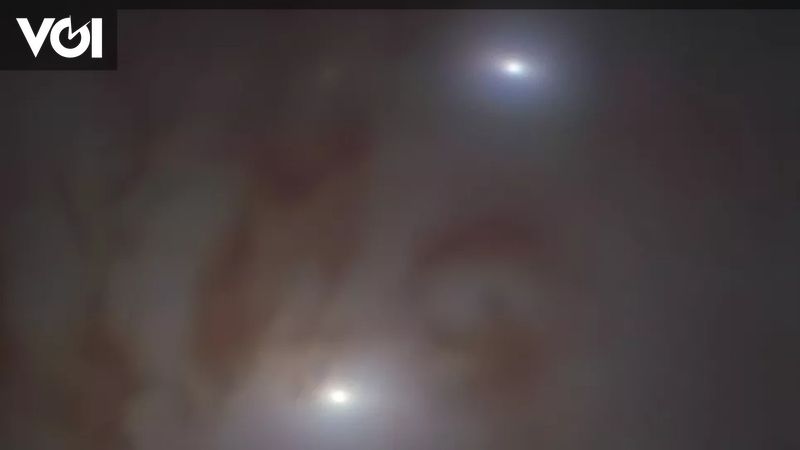JAKARTA – Two black holes that may soon become one have been found hiding in the nearest galaxy, namely galaxy NGC 7727 which is about 89 million light years from Earth in the constellation Aquarius.
Scientists say they have never seen two supermassive black holes so close together, and one so close to planet Earth. The two are expected to merge into one giant black hole 250 million years from now.
The black holes have gone undetected for so long because somehow they don’t emit as much X-ray radiation, this is common when showing the presence of black holes.
Both were discovered and analyzed by several telescopes namely Very Large Telescope owned by European Southern Observatory (ESO) in Chile and the Hubble Space Telescope. The results of this study have also been published on November 30 in the journal Astronomy & Astrophysics.
“This is the first time we have found two supermassive black holes so close to each other, less than half the separation of the previous record holder,” said Karina Voggel, an astronomer at the Strasbourg Observatory in France and lead author of the new study. Space, Wednesday, December 1st.
Previously, the record holder for the closest known pair of black holes was located 470 million light-years from Earth, more than five times as far from as the two recently discovered.
The close proximity of pair NGC 7727 allowed scientists to determine for the first time the masses of two black holes, by measuring how their gravity affects nearby stars.
Scientists report that the larger of the two black holes has a mass of nearly 154 million Suns. Meanwhile, the smaller one orbits its larger companion at a distance of only 1,600 light-years away, 6.3 million times more massive than our star.
Supermassive black holes are usually at the center of large galaxies, and when two galaxies collide and merge, so do the black holes.
The discovery, scientists explain, will provide a glimpse into the formation of very large supermassive black holes, but also suggests that more black holes and merging pairs may be hiding in other nearby galaxies.
“Our findings imply that there may be more remnants of galaxy mergers out there and may contain many large hidden black holes still waiting to be discovered. That could increase the number of known supermassive black holes in the local universe by 30 percent,” Voggel said.
Furthermore, scientists hope to increase the search for supermassive black holes and black hole pairs in the coming years with Extremely Large Telescope ESO’s new (ELT) in northern Chile, which is currently expected to be completed by 2024.
“With instruments High Angular Resolution Monolithic Optical and Near-infrared Integral field spectrograph (HARMONY) on the ELT, we will be able to make a detection like this much further than is possible at this time,” said co-author of the discovery, ESO astronomer Steffen Mieske.
– .


